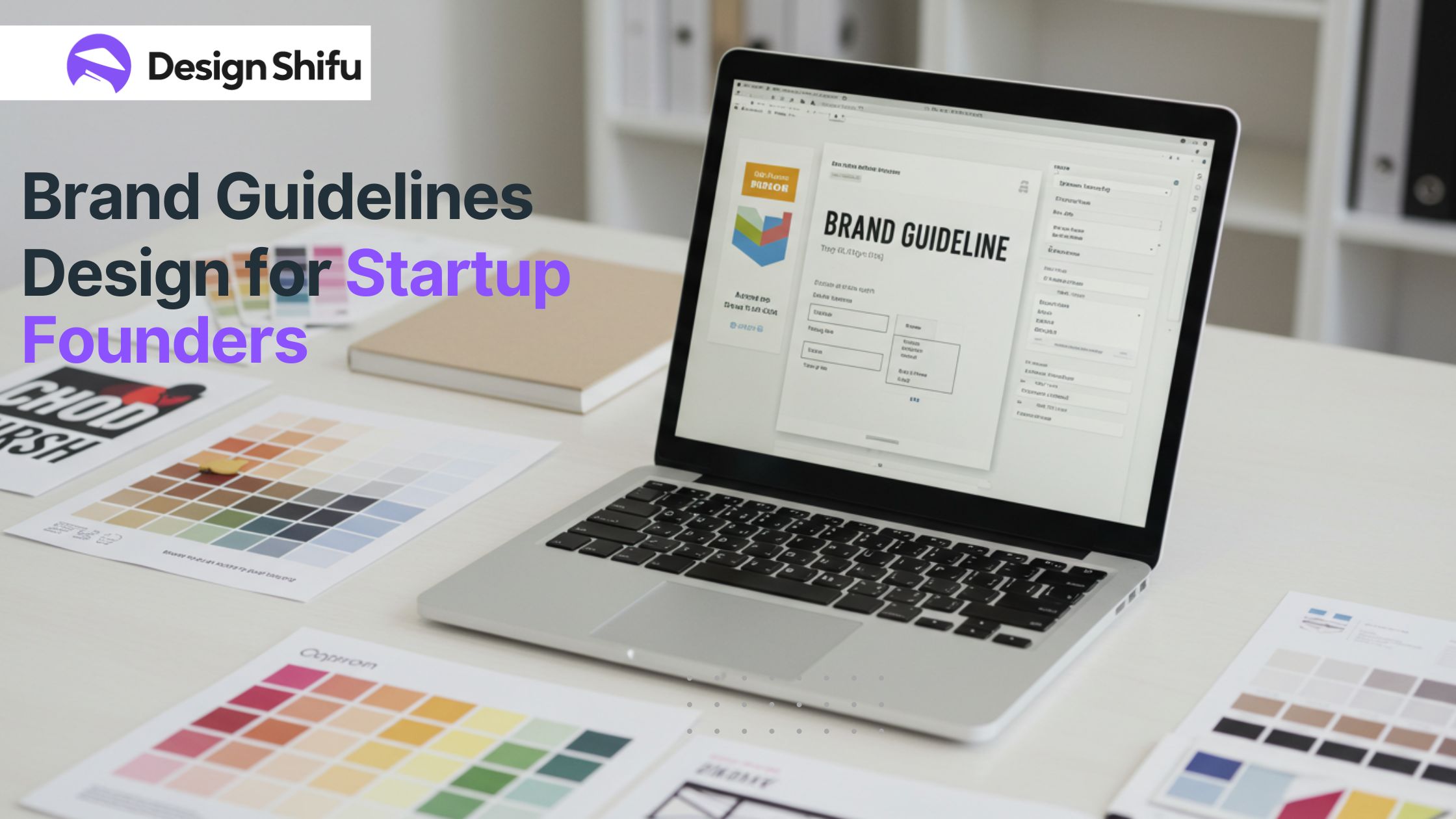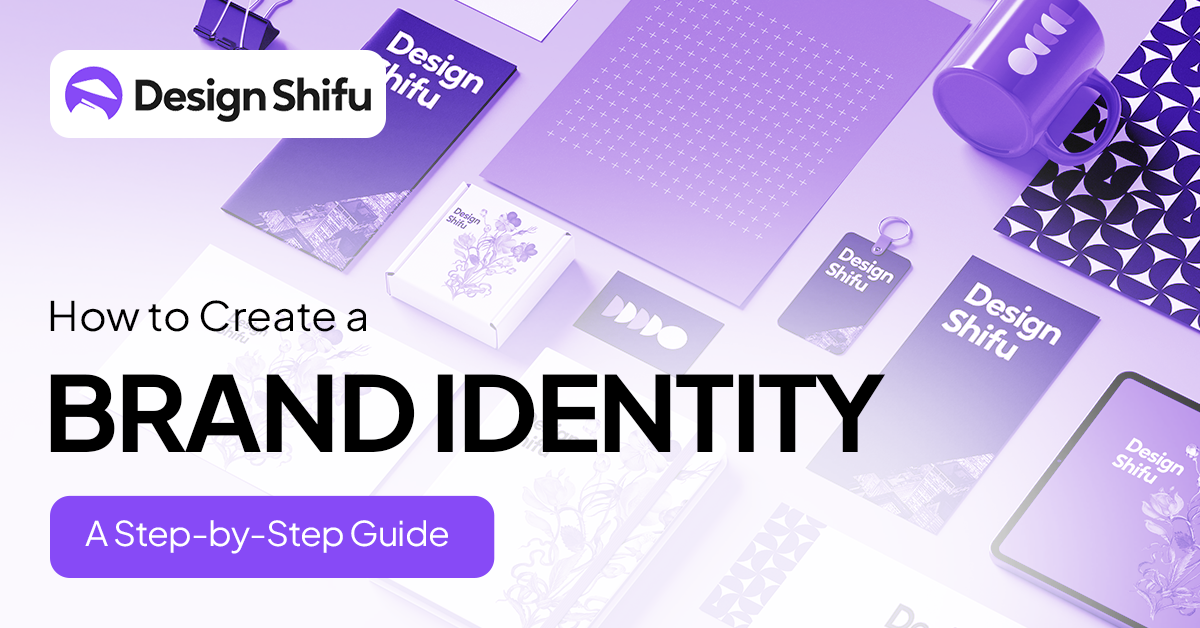Launching a startup? You’ve nailed your product, built your MVP, and maybe even secured funding. But have you thought about your brand guidelines? If not, you’re risking inconsistency and confusion—two things that can erode trust before you ever scale.
This blog will walk you through everything startup founders need to know about designing effective brand guidelines—from what they are to how to create them, and why they’re absolutely essential for your long-term success.
TL;DR: Why Brand Guidelines Matter for Startups
- They ensure consistent visual and verbal communication across all platforms.
- They save time when working with freelancers, agencies, or internal teams.
- They build a strong, recognizable brand that customers remember and trust.
- Even a basic brand guideline document can dramatically improve brand alignment.
What Are Brand Guidelines?
Brand guidelines—also known as a brand style guide—are a document that defines the visual and verbal identity of your startup. It ensures everyone, from your co-founders to your designers and social media managers, represents your brand consistently.
Think of it as your brand’s rulebook. It lays out:
- How your logo should (and shouldn’t) be used
- What fonts and colors represent your brand
- The tone and voice of your communication
- Rules for imagery, layouts, and even motion graphics
For a startup, this isn’t just “nice to have.” It’s essential to appear polished, trustworthy, and scalable from day one.
Why Startup Founders Need Brand Guidelines Early
- First Impressions Count
Your audience makes snap judgments. A messy or inconsistent brand can look amateurish—turning off investors, partners, and customers. - Scaling Made Easier
Whether you hire a freelance designer or a new marketing intern, brand guidelines help them hit the ground running without endless back-and-forth. - Cross-Platform Consistency
Your startup exists on websites, pitch decks, social media, packaging, email signatures, and beyond. Brand guidelines make sure your identity is aligned across all these touchpoints. - Build Trust and Recognition
Familiarity breeds trust. If your audience sees the same look, tone, and feel repeatedly, they’re more likely to remember—and trust—your brand.
Key Elements Every Startup Brand Guideline Should Include
Here’s what your brand guidelines should cover, even at the MVP stage:
1. Logo Usage
- Primary and secondary logo versions
- Clear space requirements
- Minimum size
- Dos and don’ts (e.g., don’t stretch, rotate, recolor)
Your logo is often the first thing customers recognize. Learn more in our deep dive into the psychology behind a great logo.
2. Color Palette
- Primary brand colors (with hex, RGB, CMYK codes)
- Secondary or accent colors
- Background color rules
- Color contrast examples for accessibility
3. Typography
- Brand fonts (for headings, body, UI, etc.)
- Font weights and usage hierarchy
- Licensing info and download links
- Mobile-friendly font alternatives if needed
4. Imagery & Photography Style
- Preferred image style (e.g., flat lays, candid shots, illustrations)
- Filters or edits to maintain consistency
- What types of images to avoid
- Examples of good and bad image usage
5. Voice and Tone
- How your brand sounds (e.g., playful, professional, witty)
- Key vocabulary and phrases to use
- Grammar and punctuation preferences
- How to communicate across different channels (website, emails, ads)
6. Iconography and Graphic Elements
- Icon styles (outlined, filled, flat)
- Use of illustrations, patterns, and shapes
- Button and UI styles for digital products
7. Brand Mission, Vision & Values
- Your brand’s “why”
- Positioning statement and elevator pitch
- Core values that shape communication and visuals
8. Social Media Guidelines
- Profile image and cover photo usage
- Hashtag strategy and emoji usage
- Visual grid or content examples
- Brand dos and don’ts on platforms like Instagram or LinkedIn
How to Create Brand Guidelines (Even with a Lean Team)
1. Start with your logo and color palette.
If you worked with a designer or agency, ask for a brand kit. If you created it DIY-style, formalize the rules and keep them in a shared document.
2. Build out a simple PDF or Google Slides deck.
No need for fancy software. Focus on clarity and consistency.
3. Use templates if needed.
Tools like Canva, Figma, or Adobe Express offer brand guideline templates you can adapt quickly.
4. Don’t forget to update it.
Your brand will evolve. Treat your guidelines as a living document.
Real Startup Example: How Guidelines Saved Time & Money
When a fintech startup hired new freelancers to revamp their social media, the designers had no guidance—just a logo and vibes. Every post looked different. The team spent hours reviewing and fixing each design.
After creating a 12-page brand guideline covering colors, voice, and layout templates, productivity skyrocketed, and content quality improved. The startup saved over 30% in design hours—money that went into user acquisition instead.
Common Mistakes to Avoid
- Overcomplicating too early: A simple, clear 8–10-page guide beats a bloated 50-page manual.
- Inconsistency in assets: If your logo file, color codes, and font files live in different places, unify them in a central location like Google Drive or Notion.
- Not sharing the guide: Your brand guidelines aren’t useful if your team doesn’t use them. Share it with anyone touching your brand—designers, marketers, freelancers, investors.
Bonus: Tools to Help You Create Startup Brand Guidelines
- Canva Pro – for beginner-friendly branding kits
- Figma – collaborative and design system–friendly
- Loom – record a walkthrough of your brand guide
- Notion – keep your brand guide interactive and linked to assets
- Frontify or Zeroheight – if you want a scalable design system later on
Final Thoughts
Brand guidelines aren’t just for big companies with deep pockets. For startup founders, they’re a secret weapon to scale faster, look polished, and tell a clear, cohesive story.
Even if you start simple, taking the time to build and use a brand guide will help you stay true to your identity, save time and money, and look like a pro—even before you’re profitable.
Need help building a brand guideline for your startup?
Consider working with a design service like Design Shifu that understands the unique needs of fast-moving startups and can deliver professional, on-brand visuals on demand
FAQ’s
1. What are brand guidelines and why do startups need them?
Brand guidelines help ensure consistency in a startup’s visual and verbal identity, building trust and recognition.
2. What should be included in a startup brand guideline?
Your brand guidelines should include logo rules, color palette, typography, tone of voice, and imagery style.
3. How can I create brand guidelines on a budget?
Start with simple tools like Canva or Figma, use templates, and gradually expand as your startup grows.
4. Can brand guidelines evolve over time?
Absolutely. As your brand grows and pivots, your guidelines should be updated to reflect new visuals or messaging.
5. Do I need a designer to create brand guidelines?
Not necessarily. Founders can start with basic tools, but a professional designer can help ensure polish and consistency.


